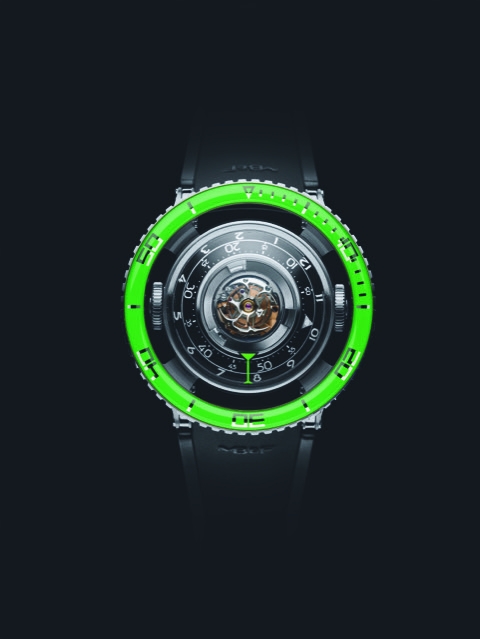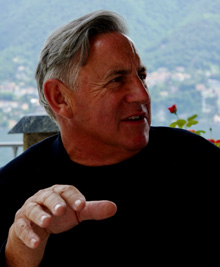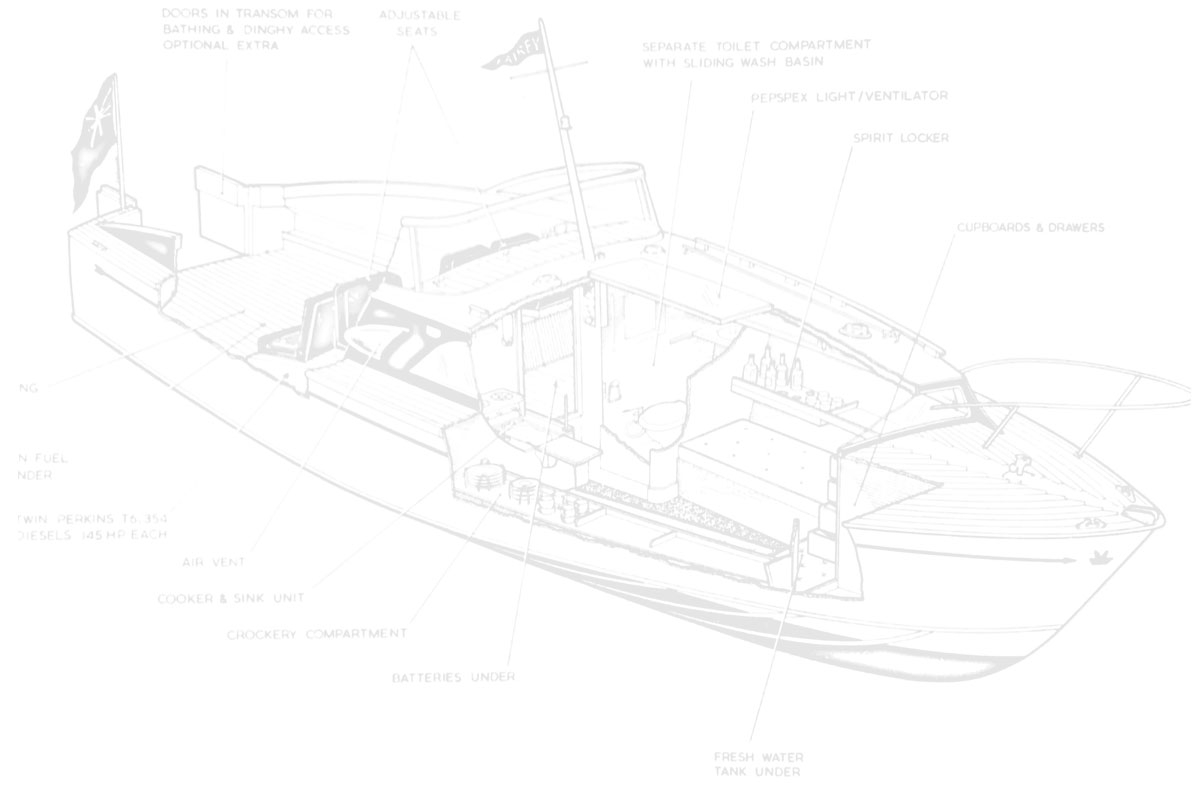It’s a Knokke out!
The Zoute Grand Prix held at the chic, affluent Belgian coastal resort of Knokke Le Zoute is one of the motoring world’s best kept secrets. The 9th Edition held on 4 – 7 October however drew an amazing crowd of nearly a quarter of a million spectators to the elegant seaside resort which is normally home to just 30,000 inhabitants.
And what was it that these Belgian, Dutch and French spectators had come to experience. Well certainly not a Grand Prix in the normal motoring sense, despite the fact that according to the informed, former F1 supremo Bernie Ecclestone did try to put the mockers on the name when he first heard about it. This Grand Prix is an amazing amalgam combining a Rally for classic cars pre-1965; a GT Tour for modern super and hyper cars; a Flying Mile and a GT Sprint; an auction; a display of 15 ‘Top Marques’ including the latest releases from Mercedes-Benz et al; cocktail parties and gala dinners; and my prime rationale for being there, a Concours d’Elegance, for which I was a Jury member.

After much deliberation by the jury in the Bridge Room of the beautiful Royal Zoute Clubhouse and by the narrowest of possible-margins, it was decided that the winner of the Best of Show 2018 Zoute Concours d’Elegance was the 1948 Alfa Romeo 6C 2500 SS Touring Superleggera coupé.
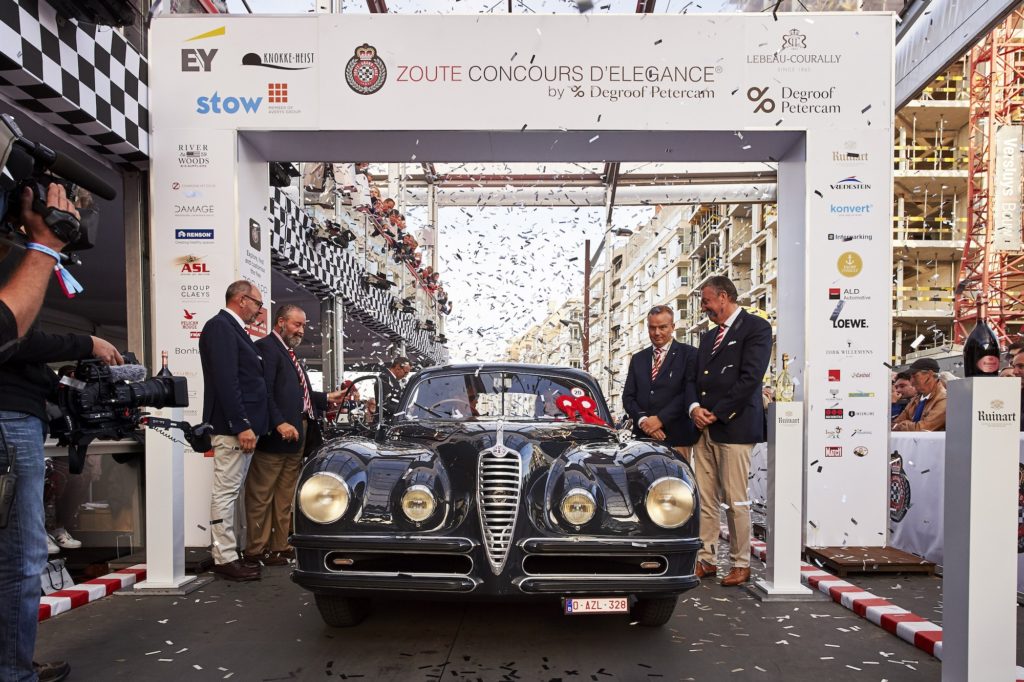
Entre Nous – Bentley Continental GT

“A way of driving that’s really ‘entre nous’ “
(‘The Continental’, with apologies to songwriters Con Conrad and Herbert Magidson)
Since its launch in 2003, the Bentley Continental has quite possibly been the ultimate grand tourer of the motoring 21st Century. Taking its inspiration from the iconic definition of luxury grand touring, the 1952 Bentley R-Type Continental which at the time was the fastest four-seater car in the world, the Continental GT has epitomised what one would expect from a modern luxury grand tourer.
The third iteration of the modern Continental GT has now arrived, taking Bentley’s blend of luxury and performance to its apotheosis. The Continental GT, whilst sharing its lineage with its predecessors, and heritage with the R-Type of over 60 years ago, is of an entirely new construction, with every panel, engineering, and detail starting from scratch, apart from (I am told by the Bentley Motors boffins) the glove box latch, which was the only item that they felt could not be improved upon!
The shape is instantly recognisable as a Bentley Continental GT, but the stance of the third-generation car looks lower, wider, and more dynamic than the vehicle it replaces. Using aerospace manufacturing techniques, the vast single sheets of crafted aluminium of which the exterior surface is composed, have subtly changed the look and feel of this motor car. Moving the front wheels forward by 135 mm has not only provided dramatically improved weight distribution and therefore balance and handling, but this has also enhanced the flow line. The new Continental GT has a longer bonnet leading the eye towards the muscular hips redolent of the R-Type, and the dramatic sloping roofline. The designers’ inspiration however was not only Bentley heritage models, but ideas as diverse as London’s The Shard building, and also the exclusive 1930s Spartan Executive aeroplane (just 35 or 36 were built by the company owned by J.Paul Getty) and owned by such notaries as Howard Hughes and King Ghazi of Iraq who reputedly had a royal throne installed in his example.
The Continental GT may not have a throne, but the interior and the car in general certainly make one feel ‘King of the Road’. The cabin is a plethora of attention to detail, almost too much to comprehend. To provide a few examples though, the use of exquisite materials, leather, wood and chrome, combine and align in dimensions measured down to tenths of millimetres, the new ‘diamond in diamond’ quilting technique of the upholstery contains 712 individually-angled stitches per square, whilst the tolerance of the new knurling surfaces to the haptic controls is to 0.1 mm (just twice the thickness of a human hair)! Suffice to say it is an environment in which luxury, comfort and pleasure combine in equal measure. Nothing has been forgotten about, nothing is spared and in the Mulliner Driving Spec of the car I drove, the cabin features exactly 310,675 stitches using 2.8 km of the finest thread to pull it all together in harmonisation.
The facts and figures behind this ultimate driving machine are mind boggling, and we have not even talked about the utterly magnificent hand-built six litre, 12-cylinder in W configuration engine with two parallel twin-scroll turbochargers providing seemingly limitless power. This, connected to the smoothest of eight-speed gearboxes, can take the Bentley Continental GT effortlessly past 205 miles per hour to 333 km/h. The power, torque and speed are even more exhilarating than the bass pumped into the heated or air-cooled seats from the optional ‘Naim for Bentley’ premium audio system with its 2,200 watts 21 channel amplifier.
With Bentley it is all about attention to detail and what attention there is to those details. Could I criticise the car? Only if I quibble about the indicator and other steering wheel stalk controls. Can I praise it? Yes, unequivocally. It is a marvel of modern mechanical and electrical engineering; a thoroughly convincing integration of the digital and the analogue; a car that interacts with both the new (my co-driver had just turned 25 and behind the steering wheel of his first supercar he was at once exhilarated and calmed by this amazing machine), and the traditional Bentley customer (whose desires and needs have been thoroughly market researched).
The intrinsic feel and beauty of this car, however, has not been compromised. The overall look is athletic and of high speed, all destined and harnessed for the command of the person behind the controls. It is truly a sum of constituent parts. My favourite of these parts has to be the new headlights. Inspired by the finest cut-crystal glassware the headlamps feature 82 individual LEDs with matrix technology, so powerful that a headlamp wash system is unnecessary, but which will never dazzle other road users even when on main beam.
The Continental GT is like a Swiss timepiece, a Savile Row tailored suit, an exclusive aeroplane, a diamond necklace, a design artefact, all rolled into one for use on the road. I liked it from the moment I opened the light-weight door, which holds itself open in any position, as I entered the future of Bentley Motors. Bentley celebrates its Centenary in 2019 but continues to look forward to the destiny of the motor car with the tour de force that is the new Continental GT, fulfilling the words of its founder W.O. Bentley, “To build a good car, a fast car, the best in its class”.
Portofino
It was great fun and an honour to be chosen as one of the first people to drive the new Ferrari Portofino in Australia. Top up or top down it is an amazing car which can take you to amazing places in style. From The Pacific Club amid the hustle and bustle of world famous Bondi Beach, and via the twists and turns of the Old Pacific Highway to the quiet laidback luxury getaway of Pretty Beach House in the Bouddi National Park on the New South Wales Central Coast. The scenery along this part of Australia’s coastline is breathtaking, as too is the unique Ferrari soundtrack of this amazing ‘trasformabile’, from berlinetta coupé to drop-top at the touch of a button. That’s me driving the Rosso Corsa!

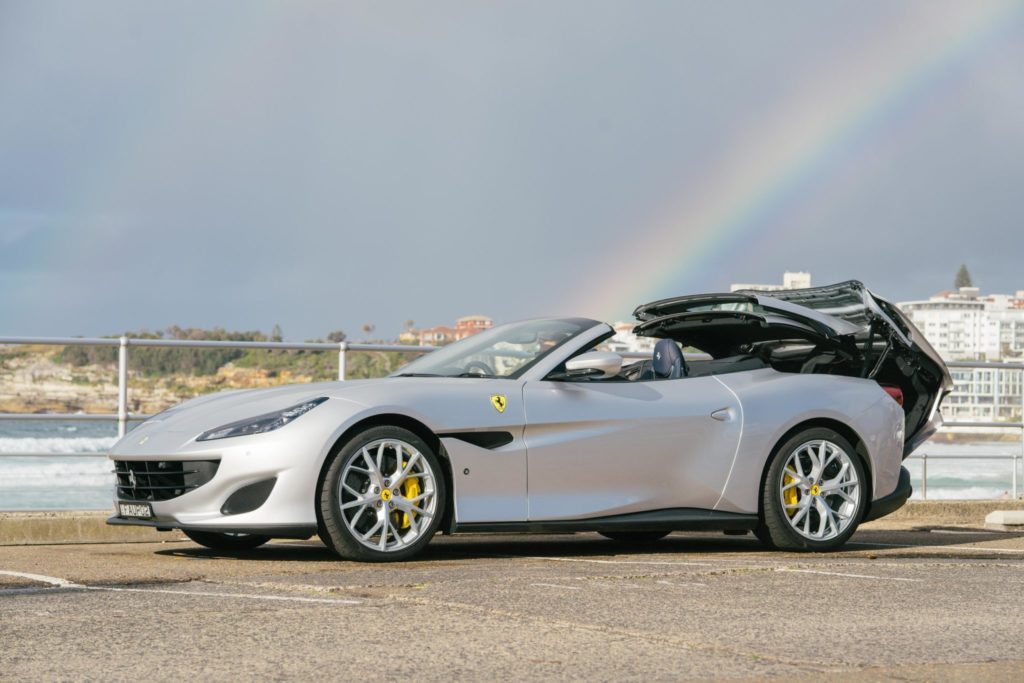
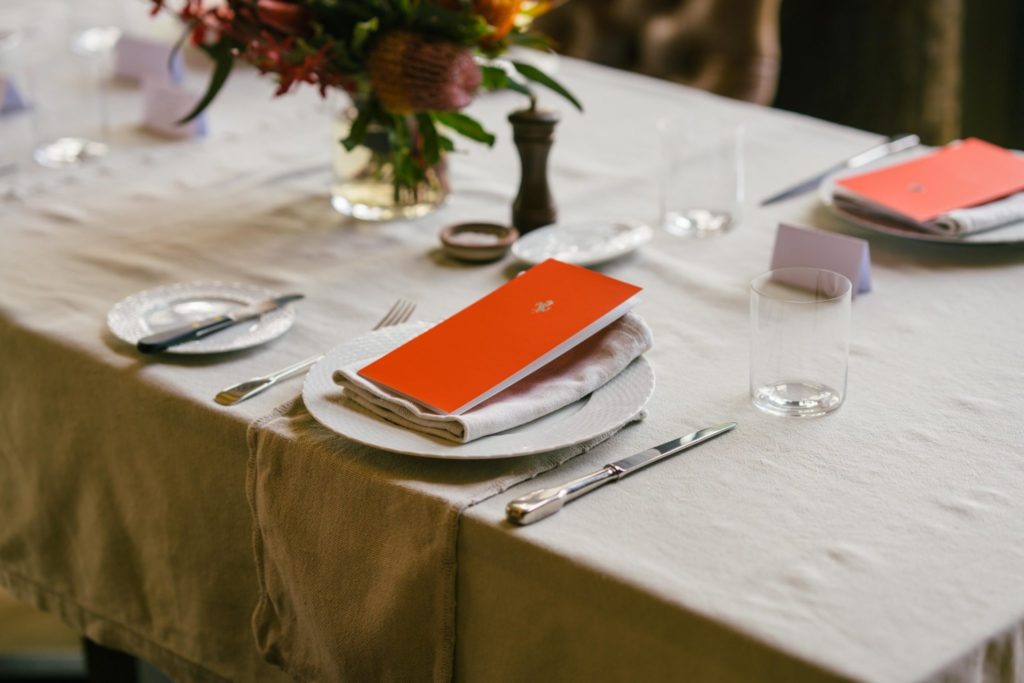
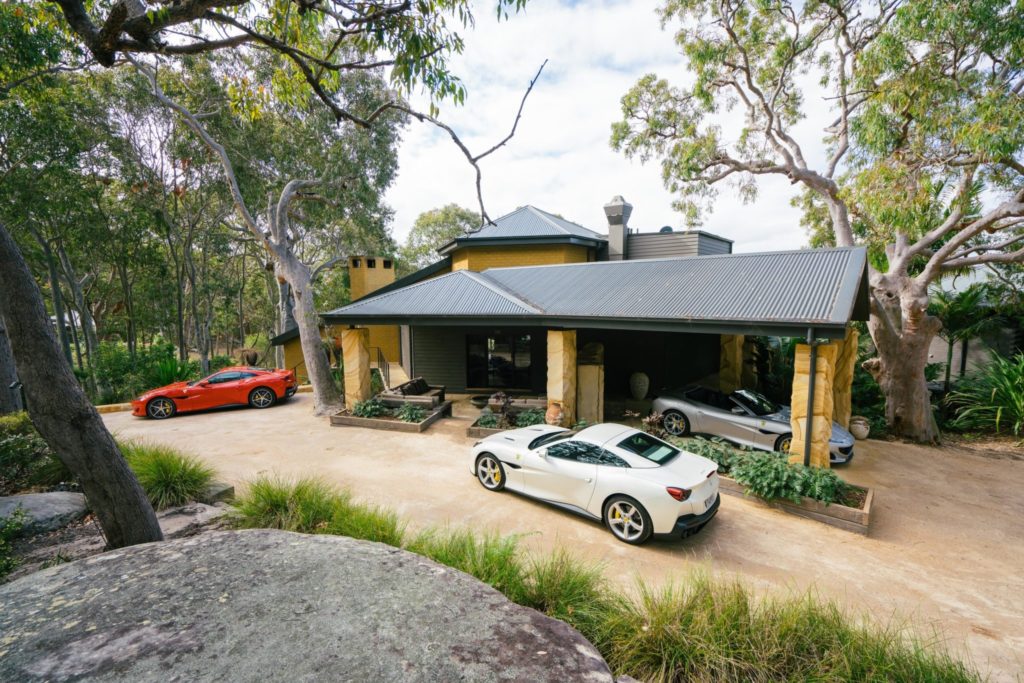
European Classic from Western Australia
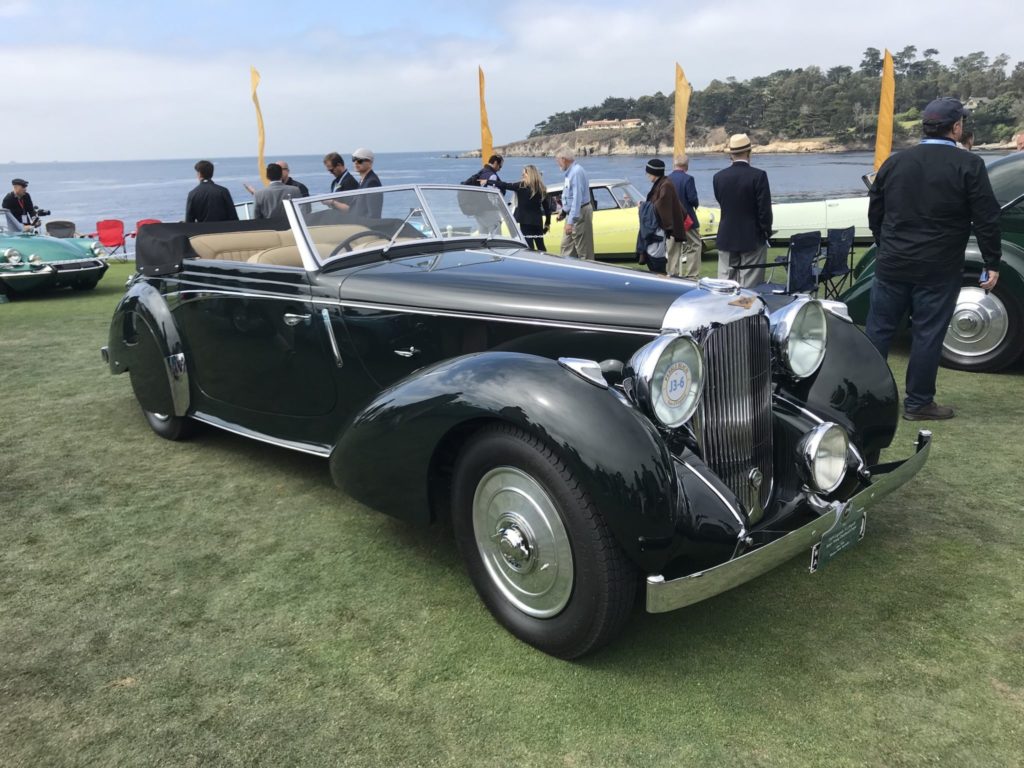
West Australian car collector Alan Tribe enjoyed a breakthrough win this week at the World’s premier class car event: the Pebble Beach Concours d’Elegance 2018.
His 1939 Lagonda V12 Rapide with a rare James Young Drophead Coupé body won the Concours Class J3 for European Classic from the late 1930s. A class win at Pebble Beach is regarded as one of the greatest accolades in the classic car world, exceeded only by the Best of Show award which recognises the best of the best.
Few Australians have exhibited at Pebble Beach, let alone won a class trophy. This year, the Pebble Beach organisers invited 209 cars from 17 countries and 31 states to be exhibited on the 18th fairway of Pebble Beach Golf Links.
The list of owners of Pebble Beach cars is a veritable Who’s Who of car collecting worldwide. Second to Alan Tribe’s Lagonda in the class was another Lagonda V12 owned by one of the world’s foremost car collectors, Sir Michael Kadoorie, of Hong Kong and a Bugatti Type 57C owned by another well-known car collector, Jim Hull, of California was third.
Mr Tribe’s Lagonda is an extremely rare car. It is one of only three or four of the 17 Rapide V12 cars produced with a custom body. The chassis was produced in July 1939 and shipped to the coachbuilder James Young in September 1939 for completion — six weeks after Britain declared war with Germany. The first owner of the car, Anthony Gillson, was killed in Burma in 1944.
Mr Tribe is only the fourth owner of the Lagonda which came to Australia in 1957 with a modest 10,000 miles on the clock. It was restored by Auto Restorations in Christchurch, New Zealand. He said that the car has beautiful flowing lines and that combined with its colour of ‘velvet green’ appealed to the judges.
The Lagonda V12 of the 1930s is regarded as the last masterpiece created by the British car designer and manufacturer WO Bentley. While the company which bore his name passed into Rolls-Royce ownership in the early 1930s, he was employed by the owner of Lagonda, Alan Good, to design the ultimate luxury sporting car. For Lagonda, WO Bentley designed a 4.5 Litre V12 engine with quad carburettors. Capable of propelling the car at more than 160kph, it is regarded as one of the most important engines of the classic era.
“It was a great thrill to win at Pebble Beach,” Mr Tribe said. “The standard of the restorations is incredible and when we were directed to drive to the podium with two other cars from our class, we thought we must have come second or third. When we won we couldn’t believe it! It is such an honour. Winning a first in class award at Pebble Beach is a summit in motoring terms and I don’t think that I will ever be able to better this. Naturally I am delighted. The trophy is now carefully packed in my luggage to bring back to Australia.”
Halcyon
Please check out a new project of mine at www.halcyonauctions.com
First up is as follows: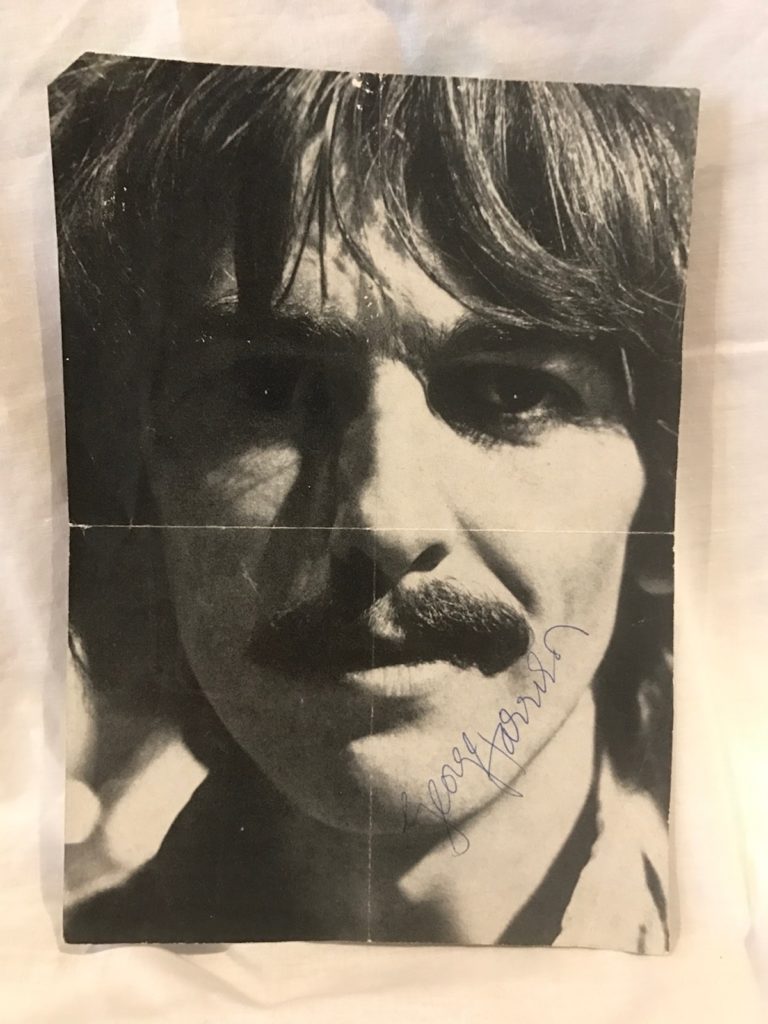
SALE OF THE 20TH CENTURY
October will see the sale of part of one of Australia’s most important private collections of international 20th century popular, cultural and social history.
Tim Fredman has been collecting unusual, rare, iconic and often unique items of popular culture all his long life. Over the years he has assembled an incredible depth and breadth of pieces that represent and reflect the tastes, fashions, ideas, thinking and influences of the way we live our lives. Whether it be music, photography, politics, books, movies, transport, art, or toys, Tim has collected pieces signed by some of the most esteemed entertainers, sportspeople and public figures of the last century.
The Beatles, Margaret Thatcher, Frank Sinatra, Cary Grant, Michael Jackson, Rod Stewart, Deep Purple, Aretha Franklin, Kylie Minogue, Herge’s Tin Tin, John Lennon, AC/DC, Jack Nicholson, Alfred Hitchcock, Sean Connery, Walt Disney, James Bond, JK Rowling, the Rolling Stones, Led Zeppelin, Andy Warhol, David Hockney, Prince, Elvis, Elizabeth Taylor, Rupert the Bear, Doris Day, Muhammad Ali, Michael Schumacher, Barack Obama, Hillary Clinton and Charles Chaplin. These are just some of the famous names included in this wonderful selection of 170 lots of the highest quality to be offered via the on-line only, timed auction which will take place between 19th October and 9th November 2018.
True to Tim’s philanthropic nature and love of music, part of the proceeds of the sale will go to Opera Scholars Australia. Opera Scholars Australia provides a young artists development program in which opera singers can grow and develop their craft in a supportive environment. Scholars have access to weekly rehearsals, vocal master classes, acting workshops and performance at events including Opera in the Market each year.

Building Blocks
Work Transformed: People, place and purpose.
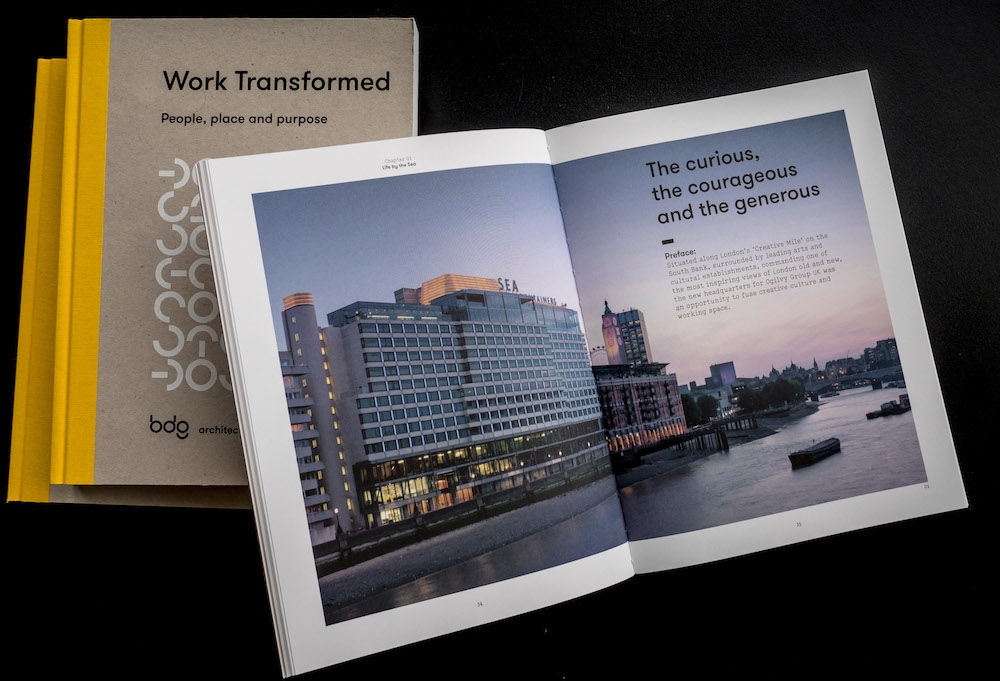
Books from architectural practices often tend to be somewhat self-congratulatory. Written by the marketing department rather than the architects themselves, creating a tome of pretty, glossy pictures illustrating the work of said practice with benign, and indeed banal, commentary.
‘Work Transformed’, by the dynamic, award-winning firm, ‘BDG architecture + design’ is a book that transcends the onanistic. Indeed, one of the editors is the company’s CEO, Gill Parker, who provides a compelling argument for modern architecture in its subtitle, ‘People, place and purpose.’ Of course, whilst this sentiment is not an entirely original one, BDG has added the human element to the axiom of form following function of Chicago’s Louis Sullivan (1856 – 1924) which so influenced Frank Lloyd Wright.
Each of the buildings or projects discussed has its own narrative. In the section, ‘Life by the Sea’, the practitioners of BDG discuss its own recent (2014) integration into Sea Containers House. This building originally designed as a hotel by American architect William Platner in the 1970s immediately became a traditional office block of the period. Now home to BDG and other members of the WPP Group it also houses the Mondrian London Hotel, thereby bringing part of the building back to its original conceived use. Whether it be here on the South Bank of the River Thames, or its work in Germany, Spain, Portugal and Italy, BDG is searching to create environments in urban settings delivering spaces for use outside of conventional working hours.
Of course, much of BDG’s work is conducted in the City of London, and the adaptive re-use of work spaces in Clerkenwell, Finsbury Circus, Hatton Garden, as well as the Adelphi Building, and the ultra-sharp The Shard, makes for the main body of the collection of work in this book. But it is not just London that gets the BDG treatment as can be seen from the chapter entitled, ‘Northern Lights’. Here projects in Manchester and Leeds continue to help break down the north-south divide, demonstrating that the former industrial heartlands of Britain, and indeed the British Empire, have come a long way from William Blake’s ‘dark, satanic mills’, becoming just as cutting-edge and full of life as any other major European metropolis.
Reading through the 232 pages of this beautifully produced book published by LID of London and New York, and printed in Latvia by Jelgavas Tipogrãfij, I was reminded of the maxim of E.M. Forster’s 1910 novel ‘Howards End’, “Only connect!…”. The idea of connecting the old and the new, to link the personal with the public form of architecture. After all, as pointed out by Peter Murray, Chairman New London Architecture in his short but exemplary foreword, it is people who create cities and their buildings.
In D.H.Lawrence’s novel ‘The Rainbow’ (1915), the idea of connection is further explored, particularly in Chapter VII, ‘The Cathedral’, where the link between people and their physical artistic creations is examined. In a more prosaic and practical manner so too does ‘Work Transformed’, providing us with (utilising another Forster analogy) ‘A Room with a View’ to witness how one company continues to connect the modern with our heritage. BDG is at the forefront of global architectural trends, yet it can still think locally; it can be, as is this book, innovative yet closely attached and connected to what has gone before. The work of the modern architect of necessity needs to take into consideration the needs of the planet, to be ‘green’, without any of the perjorative associations of the word.
‘Work Transformed’ reflects all of this through its understated style of production, format, paper choice (though I wish the book told us somewhere what that is exactly), imagery, use of diagrams and axonometrics, typeface (again, I should recognise it, but a book of this nature should be listing it), yellow binding tape, hinge and spine, all helping to reinforce the narrative of BDG through the buildings and interiors it has created or re-interpreted.
This treatise (which deserves a better index), albeit centred on the work of just one architectural firm, is still a thoughtful and thought-provoking exploration of architecture and how we live with it in the 21stCentury. As Sir Winston Churchill said, “We shape our buildings, thereafter they shape us.”

Travel
And for those of you who prefer stories about travel rather than cars, boats or watches, here is another recent example of my work from Signature Luxury & Travel Magazine:-
Spreading the Gospel
Herewith below, some recent examples of my work that perhaps make for interesting reading that have appeared in Singapore (Jetgala), Australia (Signature Luxury Travel & Style), New Zealand (NZ Classic Car), and Prewarcar.com (The Netherlands). You may also have seen my words and pictures in the last couple of issues of UK magazines, Octane, and Classic Boat.
JETGALA 36, LUXE_a master of his time, james nicholls
JETGALA 36, RIDE_a passage to india, james nicholls
JETGALA 36, RIDE_into the true blue, james nicholls
https://www.prewarcar.com/the-kellner-affair
In an English country garden
Going to the Heveningham Hall Concours d’Elegance, deep in the Suffolk countryside of East Anglia, is like stepping back in time. This is no doubt what it would have been like in Georgian times when the Lord of the Manor and local vicar handed out the prizes at the country fair. For, not only is there a Motorsport Concours d’Elegance held in the beautiful gardens at the rear of the majestic house, in the meadows in front of this remarkable Grade 1 listed Georgian mansion built in 1780 by Sir Robert Taylor for Sir Gerald Vanneck. There is also everything that one would expect from traditional country fair. Horses and ponies with little girls atop, à la the cartoonist Norman Thelwell; a dog show and sheep dog trials: food stalls; early tractors; a bungee jump; the Wall of Death; medieval jousting; boating; early aeroplanes including fly pasts from a Spitfire, wearing the photo reconnaissance blue livery of its time serving in Europe from 1944, celebrating the centenary of the Royal Air Force; a quarter mile hill-climb entitled Horsepower Hill where plenty of rubber was laid in the road; and, I am sure somewhere, if I had had the time to find it, candyfloss and the toffee apples reminiscent of my childhood!
If you have ever read any of the short stories set in the English countryside by P.G. Wodehouse, you will quickly get the picture. The Blandings Castle of the put-upon Lord Emsworth says it all.
But my time was spent with the other jaw-dropped admirers marvelling at the incredible breadth and depth of the quality of cars brought together on the perfectly manicured terraced green sward (designed by renowned landscape architect Kim Wilkie) at the rear of the home of Ferrari collectors Jon and Lois Hunt.
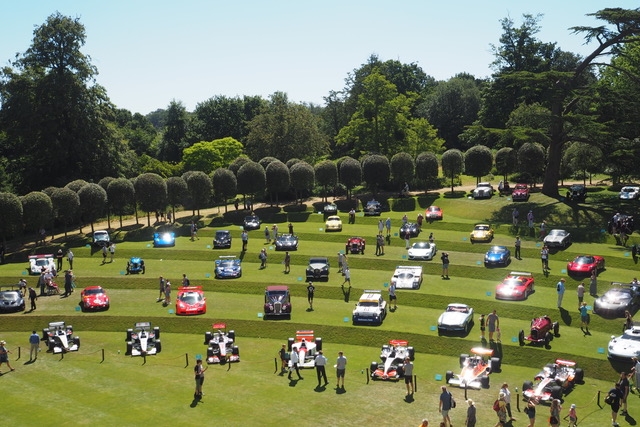
And Friends
I was at a cocktail party for MB&F (Maximilian Büsser and Friends) watches the other evening and later conducted an exclusive interview with the charismatic founder Max Büsser, “When I launched the Company everybody told me it’s the worst name ever. You can’t call a high-end watchmaking brand Friends. And I said well that’s the only word I have. And it’s funny because 13 years later, success makes you sexy and so everyone’s like, oh great name.”
Here is an example of the time machines coming out of his horological laboratory. Jules Verne, H.G.Wells along with a touch of Georges Remi!
